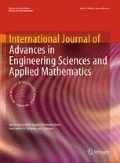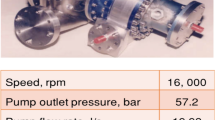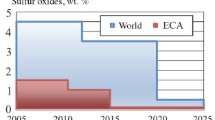Abstract
Cryogenic propulsion systems using liquid hydrogen and liquid oxygen propellant combination are used in satellite launch vehicles in view of the higher specific impulse (ISP). Due to extreme low temperature of cryogenic propellant and low density and explosive nature of LH2, the development of cryogenic propulsion system is very complex and time consuming. In ISRO an indigenous cryogenic upper stage powered by an engine developing a nominal thrust of 73.5 kN in vacuum with a propellant loading of 12.8 tonnes is developed and successfully flight tested for the first time in GSLV D5 flight on 5th January 2014. A mathematical model is developed for finalizing the engine start and shut off sequence, ensuring smooth and safe ignition, predicting performance of subsystems under transient phase, nominal and off nominal conditions, control systems parameter settings and for the performance estimation of engine in sea level and flight. This paper highlights the configuration and working of a cryogenic engine, mathematical modelling of the engine, applications of the model in the cryogenic engine development and comparison of predicted values with the test results.


















Similar content being viewed by others
Abbreviations
- PC :
-
Main engine chamber pressure
- PGGE:
-
Gas generator chamber pressure
- PFPI:
-
Pressure at main fuel pump inlet
- PHPD:
-
Pressure at main fuel pump delivery
- POPI:
-
Pressure at main oxidizer pump inlet
- POPD:
-
Pressure at main oxidizer pump delivery
- PHCHE:
-
Pressure of hydrogen at coolant channel exit
- POME:
-
Pressure of LOX at the exit of mixture ratio controller
- PGTE:
-
Pressure at the exit of main turbine
- POAE:
-
Pressure of LOX at the exit of absolute velocity regulator
- PHBTI:
-
Pressure at hydrogen booster turbine inlet
- PHBTD:
-
Pressure at hydrogen booster turbine exit
- PFBO:
-
Pressure at fuel booster pump outlet
- POBTI:
-
Pressure at oxygen booster turbine inlet
- POBO:
-
Pressure at oxygen booster pump outlet
- TFPI:
-
Fluid temperature at main fuel pump inlet
- TOPI:
-
Fluid temperature at main oxidizer pump inlet
- TOPD:
-
Fluid temperature at main oxidizer pump delivery
- THCHE:
-
Fluid temperature of hydrogen at coolant channel exit
- THBTD:
-
Fluid temperature at hydrogen booster turbine exit
- mlox :
-
LOX flow rate
- mf :
-
Hydrogen flow rate
- ME:
-
Main engine
- GG:
-
Gas generator
- OBT:
-
Oxidizer booster turbine
- FBT:
-
Fuel booster turbine
- SE:
-
Steering engine
- MOP:
-
Main oxidizer pump
- V, U:
-
Velocity
- f:
-
Friction factor, body force
- L:
-
Length
- At :
-
Throat area
- A:
-
Turbine nozzle area
- C*:
-
Characteristic velocity
- hg:
-
Gas side convective heat transfer coefficient
- hc:
-
Coolant side heat transfer coefficient
- qc:
-
Heat flux due to convection
- qr:
-
Heat flux due to radiation
- q:
-
Combined heat flux
- k:
-
Conductivity of the material
- t:
-
Shell thikness
- ηf:
-
Fin effectiveness
- H:
-
Total enthalpy
- C:
-
Concentration
- τ:
-
Shear stress
- μ:
-
Viscocity
- ρ:
-
Density
- P:
-
Pressure
- Q, R:
-
Source terms
- h:
-
Static enthalpy
- E:
-
Total energy
- e:
-
Internal energy
- J:
-
Diffusion flux
References
Huzel, D.K., Huang, G.H.: Modern Engineering for Design of Liquid Propellant Rocket Engines. American Institute of Aeronautics and Astronautics, Washington D.C. (1992)
Sutton, G.P.: Rocket Propulsion Elements: An Introduction to the Engineering of Rockets. Wiley, New York (1992)
Gordon, S., MCBride, B.J.: Computer Program for calculation of Complex Chemical Equilibrium Compositions, Rocket Performance, Incident and Reflection shocks and Chapman-Jougent Detonations, NASA SP-273 (1971)
White, F.M.: Fluid Mechanics. McGraw-Hill Book Company, New York (1979)
Author information
Authors and Affiliations
Corresponding author
Rights and permissions
About this article
Cite this article
Narayanan, V., Suresh, M.S., Jayan, N. et al. Mathematical modelling of a cryogenic engine. Int J Adv Eng Sci Appl Math 6, 183–194 (2014). https://doi.org/10.1007/s12572-015-0117-2
Published:
Issue Date:
DOI: https://doi.org/10.1007/s12572-015-0117-2




